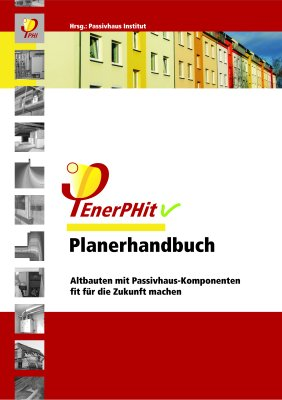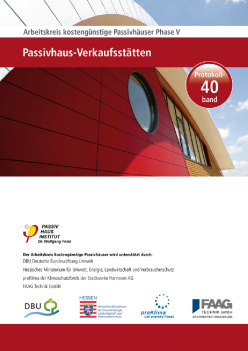Hospitals
- Baseline study - implementing the Passive House concept in hospitals
Many of the 2,080 hospitals in Germany and others all over the world require retrofitting. Evaluations of consumption statistics show that hospitals are among the buildings with the highest energy consumption. To evaluate and tap the savings potential of retrofits and energy efficient new builds, the State of Hesse financed a study into the basic considerations when implementing the Passive House standard in hospitals. The study was especially timely for the construction of a new-build hospital, the Frankfurt Höchst Clinic.
Due to the demanding and consistent 24-hour use, as well as the higher temperature required in patient rooms, the Passive House Standard is particularly valuable for hospitals. The study also shows that if the energy demand is calculated using conventional methods, almost half of the future energy demand remains overlooked.
Conventionally built hospitals are often already equipped with ventilation technology. From there it is only a small step to installation of a controlled ventilation system with heat recovery in the buildings. Furthermore, the baseline study showed that despite the higher indoor temperature and the higher air change rate of the controlled ventilation system, the heating demand can be limited to 15 kilowatt hours per square metre of treated floor area per year (kWh/(m²TFAa) by using appropriate measures.
Lighting, hot water generation, a ventilation system and heating and cooling are among the highest consumers of energy in hospitals. Depending on the equipment, the sterile supply, magnetic resonance imaging equipment and computer equipment are also responsible for a high percentage of energy demand. Using existing technology, the demand for heating, lighting, ventilation, computer equipment, cooling and hot water generation can be reduced significantly.
Several processes in a hospital produce waste heat. It is undeniable that this waste heat should be used for other processes; for example, in the heating system via a heat pump. The investigation shows, however, that priority should be given to optimisation of the processes that produce waste heat.
Authors: Oliver Kah, Kristin Bräunlich, Tanja Schulz, Passive House Institute
Read more
Further technical literature on this topic is available for purchase here.
| Next Courses |
PHPP Expert
Passive House Designer / Consultant
Construction Verifier
Site Supervisor
![]() read more
read more
e-learning
| Events |
iPHA Webinar "Project Spotlight: The CLT 8-floor ANMF hotel in Melbourne, Australia with heritage overlay." | November 12, 2025
![]() read more
read more
![]() Passive House Open Days |
Passive House Open Days |
7 - 9 November 2025
![]() read more
read more
![]() 24 - 25 April 2026, Essen, Germany
24 - 25 April 2026, Essen, Germany
![]() read more
read more
| Component Database |
 Passive House
Passive House
Component Database
read more
| Projects |
| New developments |
![]() designPH
designPH
read more
![]() NEW: PHPP 10 (2021)
NEW: PHPP 10 (2021)
read more
 Seals for Certified Passive House Components
Seals for Certified Passive House Components
read more
 Passive House Classes,
Passive House Classes,
Classic, Plus, Premium
read more
 EnerPHit -
EnerPHit -
PHI certification for retrofits
read more
 Wall plaque
Wall plaque
for certified Passive Houses
read more
| Press releases |
| Research & Literature |
![]() Passive Houses for different climate zones
Passive Houses for different climate zones
more
 Retrofits with Passive House components -
Retrofits with Passive House components -
EnerPHit Planner Handbook
(in German)
 Passive House Retail Stores now out
Passive House Retail Stores now out
Overview of contents
(in German)


